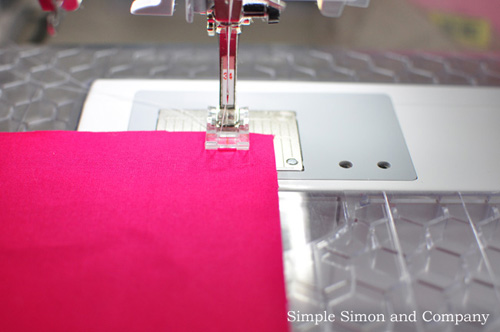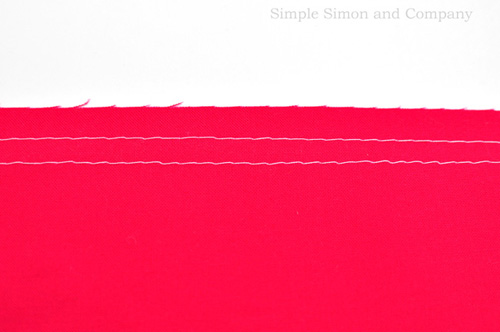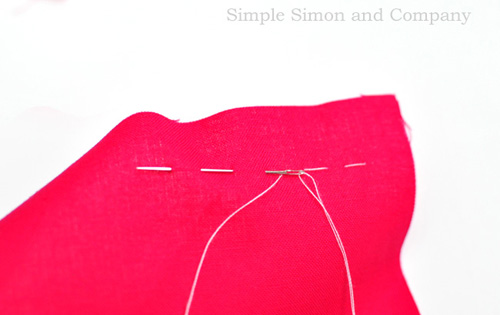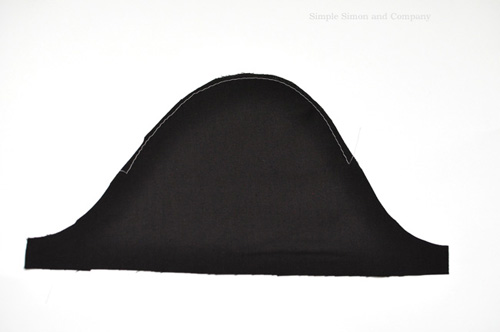Today we are going to share some tips on basting. What a boring subject, I know… But really, basting is useful. Basting is fun! Let’s cheer for basting today, mostly because it does its job well!
Let’s first start with a definition of what basting is. Basting is to sew temporarily by hand or machine to hold fabric in place until the permanent stitching is completed. There are two types of basting: machine basting and hand-basting.
Let’s start first with Machine Basting:

Basically machine basting is a long running stitch that is easily pulled out. To make your running stitches (or basting stitches) set your stitch length to a five (or more!), then without back-stitching sew a row of stitches across the fabric.

Here is what two rows of basting stitches will look like.

We will talk about why we baste and when we baste in a minute, but for now let’s move on to Hand Basting…

Hand-basting is the same process. It is a series of long running stitches that can easily be removed but will hold something temporarily in place. Now that we know what basting is let’s talk about the whys of basting.
Why should I baste?
There are many reasons to baste. Because basting is a temporary method for holding your fabric in place until you have sewn your permanent stitching, you will use it whenever you need a temporary hold. It also allows you to check the accuracy of fitting a garment or the accuracy of your seams before your final stitching.
Other places that are common for a basting stitch: Two (or three) rows of basting stitches are often used to gather.

Basting is a great way to hold zippers in place before you permanently stitch the zipper into a garment.

A basting stitch is also commonly used to ease-in sleeves for a good fit on bodices, dresses or shirts.

Basting also works very well for fitting or draping in garment sewing.

And there you have it… Now you are an expert in basting!
And a few more tips for good luck:
- Use a basting stitch when sewing lace trims, ric-rac, or piping onto a project to hold it in place before your final stitching.
- Use basting only on fabrics that will not show holes. For example, one shouldn’t baste leather or other fabrics where the basting holes would show in the final product.
- Basting is great to use on velvet or silks or other fussy fabrics that tend to shift while sewing.
- Remove basting stitches after you have permanently sewn the final seam and before ironing to prevent basting seams from showing in final product.